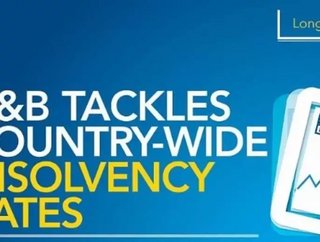D&B tackles country-wide insolvency rates

Before you read this, check out the upper-right hand corner of this page to view this article in our digital reader. Trust us, it's way cooler!
The innovative minds at Dun & Bradstreet have done it again. Seeking to find future economic data relating to insolvency (or bankruptcy) rates from the world’s major countries, the research firm released its Global Business Failure report, detailing countries fairing well (and not so well) in the current economic climate.
The study pinpoints exactly where supply chain managers want to source their supplies from in the immediate future, and which areas they should look to avoid.
JIM LAWTON ON SUPPLY CHAIN DISRUPTIONS IN JAPAN
“The nerve that this is hitting for people is that five years ago, nobody paid any attention to supply risk,” Jim Lawton of Dun & Bradstreet said. “2007 really put this on peoples’ radar screens.”
The study aims to take looks at insolvency rates in each country, which Lawton thinks is sometimes a better indicator than looking just at the bankruptcy likelihood of a company. Having dual sources of supply does no good when they’re located in the same country and an event like the Japan disaster takes place.
“Time after time after time, senior procurement professionals are realizing that their ability to meet Wall Street’s expectations is at risk as a result of the countries that they’re doing business with,” Lawton explains.
Satminder Ramewal was part of the Dun & Bradstreet Country Risk team that helped put together the report, which lists Australia, Portugal and the United Kingdom as danger zones when looking for suppliers.
“The cost-cutting measures that the UK government has started to implement are not going to help growth, and that’s going to cause bankruptcy in the UK to rise,” Ramewal said, citing the report.
Lawton explains, however, that these high-risk zones don’t always need to be abandoned altogether.
“Obviously you want to avoid the risk if you can, but in some situations, you don’t have a choice,” Lawton said. “If there are compelling reasons to do business there, make sure you have plans in place to protect your company.”
Examples of protection strategies include monitoring the situation, asking suppliers for their individual financial solvency and building additional inventory to use should a situation arise.
Not every country is showing significant sourcing risk, however. Germany’s export-driven economy is thriving, driving down insolvency rates.
“Because (Germany’s) economy is quite buoyant, the number of bankruptcies is going to be less, because everyone is benefitting there as a whole,” Ramewal said.
Canada has also shown a falling insolvency risk, making it another prime location from which to source materials.
The bottom line, however, is that a nation’s economy can make doing business with them a more friendly, less complicated procedure.
“If you think about the best places to get sources of supply, there’s a lot of consistency between where you would want to be doing business with and the country’s economic outlook,” Lawton said. “With a strong economy comes infrastructure improvements and judicial competency. If I can’t litigate against potential breaches of contract, then that contract is worth less than the paper it’s written on.
“Countries like Germany are the types of countries that you want to be looking at from a sourcing perspective.”
- Kinaxis: Why Supply Chain Leaders Must Ramp up ResilienceSupply Chain Risk Management
- KPMG and ASCM Unveil Latest Supply Chain Stability IndexSupply Chain Risk Management
- How o9 Solutions is Increasing Supply Chain VisibilitySupply Chain Risk Management
- Supply Chain Lessons to Learn from Baltimore Bridge CollapseSupply Chain Risk Management






